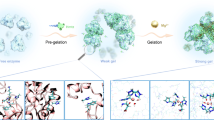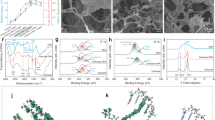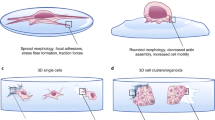Abstract
THE immobilisation of enzymes by attachment to water-insoluble materials has received considerable attention recently1, both for academic reasons and for possible industrial applications. A logical extension of this approach, especially where multi-stage enzymic reactions are being considered, is the immobilisation of microorganisms, which are often the source of many enzyme preparations. The advantages of such an approach are immediately obvious. The tedious and time consuming procedures for enzyme extraction and purification are instantly eliminated, cofactors and coenzymes are readily at hand, the cellular enzymes are often organised into the requisite metabolic pathways and problems associated with enzyme instability may also be avoided. Furthermore, the use of immobilised cells would avoid the problem in industrial processes of separating the product from the enzyme. The immobilisation of cells by the standard glutaraldehyde procedure, however, causes their decease, and entrapment in polyacrylamide gel is commonly used instead to achieve immobilisation2,3. This method produces a minimum of interaction between the microbial cell and the insoluble matrix, thus maximising the probability of the cell's survival. On the other hand, the availability of the cell to any intended substrate is seriously reduced, since it can reach the cell only by diffusion. An alternative approach of immobilising cells on collagen, by the formation of a stable network of multiple ionic (salt) linkages, hydrogen bonds and Van der Waals' interactions has been successful4. We have now pursued an independent approach and report here the successful immobilisation of cells on the hydroxides (hydroxyoxides) of titanium (IV) and zirconium (IV) by a chelation process.
This is a preview of subscription content, access via your institution
Access options
Subscribe to this journal
Receive 51 print issues and online access
$199.00 per year
only $3.90 per issue
Buy this article
- Purchase on SpringerLink
- Instant access to full article PDF
Prices may be subject to local taxes which are calculated during checkout
Similar content being viewed by others
References
Kennedy, J. F., Adv. Carbohyd. Chem. Biochem., 29, 305 (1974).
Mosbach, K., and Mosbach, R., Acta chem. scand., 20, 2807 (1966).
Updike, S. J., Harris, D. R., and Shrago, E., Nature, 224, 1122 (1969).
Vieth, W. R., Wang, S. S., and Saini, R., Biotechnol. Bioengng, 15 565, (1973).
Kennedy, J. F., and Kay, I. M., J. chem. Soc. Perkin 1, 329 (1976).
Kennedy, J. F., Barker, S. A., and Humphreys, J. D., J. chem. Soc. (in the press).
Kimball, G. E., J. chem. Phys., 8, 188 (1940).
Muna, J. M., and Vaughan, P. A., J. chem. Phys., 33, 194 (1960).
Ermakov, A. N., Marov, I. N., and Belyaeva, V. K., Russ. J. inorg. Chem., 8, 845 (1963).
Blumenthal, W. B., The Chemical Behaviour of Zirconium (Van Nostrand, New Jersey, 1958).
Zaitsev, L. M., and Bochkarev, G. S., Russ. J. inorg. Chem., 7, 411 (1962).
Zaitsev, L. M., and Bochkarev, G. S., Russ. J. inorg. Chem., 9, 1463 (1964).
Kennedy, J. F., Barker, S. A., and Zamir, A., Antimicrob. Agents and Chemother. 6, 777 (1974).
Intorre, B. I., and Martell, A. E., J. Am. chem. Soc., 82, 358 (1960).
Author information
Authors and Affiliations
Rights and permissions
About this article
Cite this article
KENNEDY, J., BARKER, S. & HUMPHREYS, J. Microbial cells living immobilised on metal hydroxides. Nature 261, 242–244 (1976). https://doi.org/10.1038/261242a0
Received:
Accepted:
Issue date:
DOI: https://doi.org/10.1038/261242a0
This article is cited by
-
Use of titanium species for the immobilization of cells
Transition Metal Chemistry (1990)
-
Effects of immobilization on growth, substrate consumption, β-galactosidase induction, and byproduct formation inEscherichia coli
Journal of Industrial Microbiology (1989)
-
Immobilization of cells via activated cell walls
Biotechnology Letters (1986)
-
Butane 2,3-diol production by immobilizedAeromonas hydrophila
Biotechnology Letters (1985)
-
Immunological relationships betweenSalmonella flagella and their potential application for salmonellae detection by immunoassay
Medical Microbiology and Immunology (1985)



